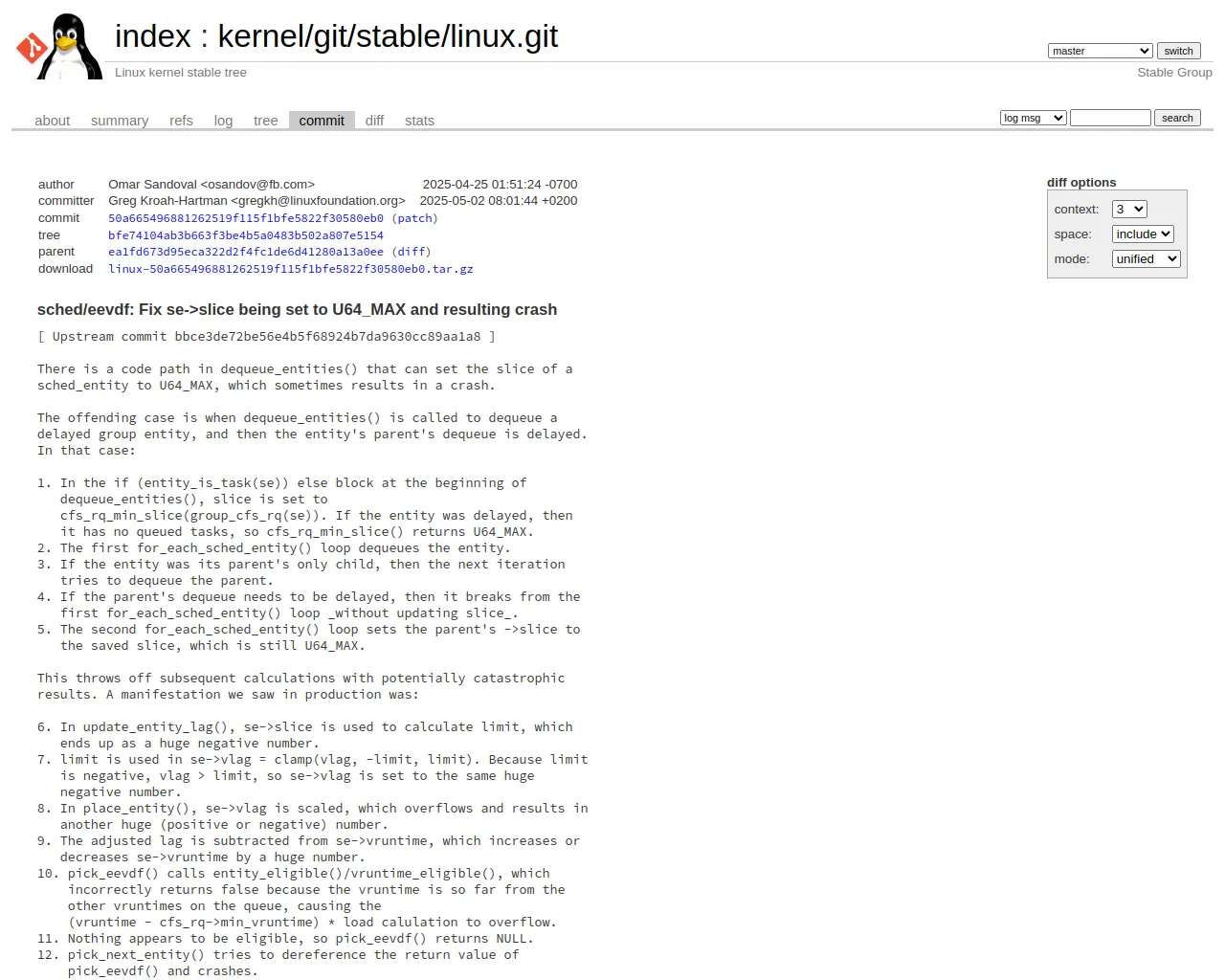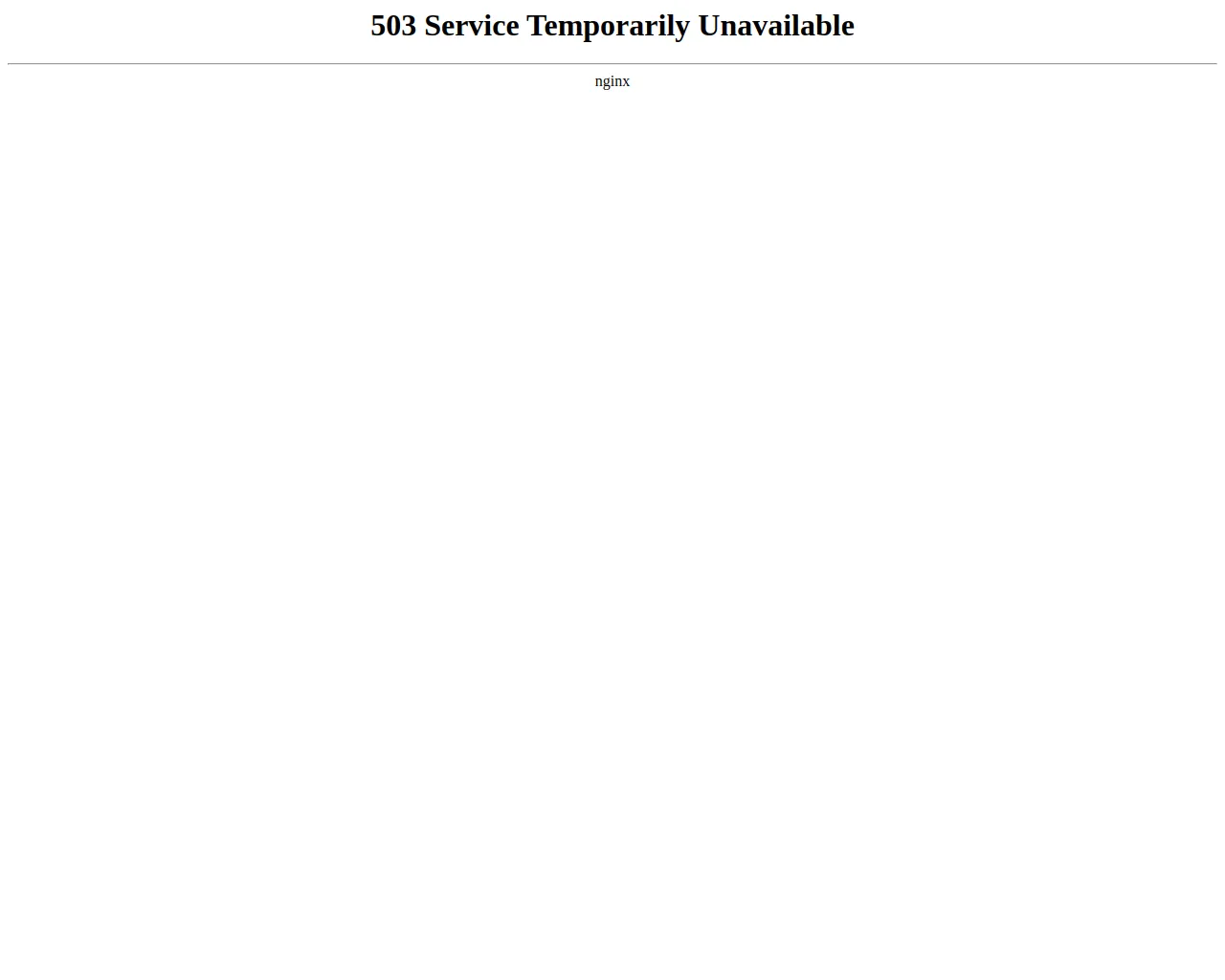一、 漏洞 CVE-2025-37821 基础信息
漏洞信息
# sched/eevdf:修复设置为U64_MAX的se->slice导致的系统崩溃问题
N/A
提示
尽管我们采用了先进的大模型技术,但其输出仍可能包含不准确或过时的信息。
神龙会尽力确保数据准确,但也请结合实际情况进行甄别与判断。
神龙祝您一切顺利!
神龙会尽力确保数据准确,但也请结合实际情况进行甄别与判断。
神龙祝您一切顺利!
漏洞标题
sched/eevdf: Fix se->slice being set to U64_MAX and resulting crash
来源:美国国家漏洞数据库 NVD
漏洞描述信息
In the Linux kernel, the following vulnerability has been resolved:
sched/eevdf: Fix se->slice being set to U64_MAX and resulting crash
There is a code path in dequeue_entities() that can set the slice of a
sched_entity to U64_MAX, which sometimes results in a crash.
The offending case is when dequeue_entities() is called to dequeue a
delayed group entity, and then the entity's parent's dequeue is delayed.
In that case:
1. In the if (entity_is_task(se)) else block at the beginning of
dequeue_entities(), slice is set to
cfs_rq_min_slice(group_cfs_rq(se)). If the entity was delayed, then
it has no queued tasks, so cfs_rq_min_slice() returns U64_MAX.
2. The first for_each_sched_entity() loop dequeues the entity.
3. If the entity was its parent's only child, then the next iteration
tries to dequeue the parent.
4. If the parent's dequeue needs to be delayed, then it breaks from the
first for_each_sched_entity() loop _without updating slice_.
5. The second for_each_sched_entity() loop sets the parent's ->slice to
the saved slice, which is still U64_MAX.
This throws off subsequent calculations with potentially catastrophic
results. A manifestation we saw in production was:
6. In update_entity_lag(), se->slice is used to calculate limit, which
ends up as a huge negative number.
7. limit is used in se->vlag = clamp(vlag, -limit, limit). Because limit
is negative, vlag > limit, so se->vlag is set to the same huge
negative number.
8. In place_entity(), se->vlag is scaled, which overflows and results in
another huge (positive or negative) number.
9. The adjusted lag is subtracted from se->vruntime, which increases or
decreases se->vruntime by a huge number.
10. pick_eevdf() calls entity_eligible()/vruntime_eligible(), which
incorrectly returns false because the vruntime is so far from the
other vruntimes on the queue, causing the
(vruntime - cfs_rq->min_vruntime) * load calulation to overflow.
11. Nothing appears to be eligible, so pick_eevdf() returns NULL.
12. pick_next_entity() tries to dereference the return value of
pick_eevdf() and crashes.
Dumping the cfs_rq states from the core dumps with drgn showed tell-tale
huge vruntime ranges and bogus vlag values, and I also traced se->slice
being set to U64_MAX on live systems (which was usually "benign" since
the rest of the runqueue needed to be in a particular state to crash).
Fix it in dequeue_entities() by always setting slice from the first
non-empty cfs_rq.
来源:美国国家漏洞数据库 NVD
CVSS信息
N/A
来源:美国国家漏洞数据库 NVD
漏洞类别
N/A
来源:美国国家漏洞数据库 NVD
漏洞标题
Linux kernel 安全漏洞
来源:中国国家信息安全漏洞库 CNNVD
漏洞描述信息
Linux kernel是美国Linux基金会的开源操作系统Linux所使用的内核。 Linux kernel存在安全漏洞,该漏洞源于调度器切片设置不当,可能导致内核崩溃。
来源:中国国家信息安全漏洞库 CNNVD
CVSS信息
N/A
来源:中国国家信息安全漏洞库 CNNVD
漏洞类别
其他
来源:中国国家信息安全漏洞库 CNNVD
二、漏洞 CVE-2025-37821 的公开POC
| # | POC 描述 | 源链接 | 神龙链接 |
|---|

